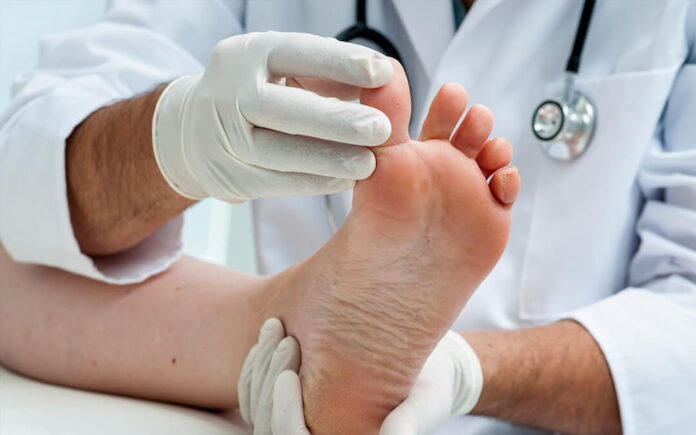You need to pay more attention than you normally do when shopping for shoes for diabetics. In addition to looking for shoes that do not have any seams on the inner surface that can rub on your foot, it is also recommended that you look for something with a deeper toe box, with good coverage on the lower and upper surfaces. Furthermore, you should only wear padded socks made from a material that manages moisture, like cotton, which also comes without any seams as well.
Avoid Walking Barefoot At All Costs
Most people understand the importance of wearing protective diabetic shoes when going outside. However, it is also important to avoid walking barefoot indoors as well. This way, you will be safeguarded from tiny scrapes and cuts or even penetration by misplaced thumbtacks, sewing needles, or shards of glass and splinters. You may not pick up on these injuries until an infection sets in if you have neuropathy. As such, whether you are indoors or outdoors, be sure to put on a pair of shoes.
Reduce Any Risk Of Infection With Dry Feet
Your regular hygiene routine should include completely drying your feet. It is important to note that the space between your feet may get infected due to breakdown caused by moisture locked in this air-tight space.
In addition to removing sweaty or wet socks immediately, you should always dry your feet thoroughly after washing them, using a towel. Remember, you should always avoid putting any moisturizer in between your toes, even though it is okay to apply it over other parts of your body to avoid dry and cracked skin.
If You Experience Any Foot Issues, See A Podiatrist
If ignored, even calluses that seem harmless may become problematic. Instead of always rushing to the pharmacy to buy over-the-counter feet products, it is recommended that you include a podiatrist, physician specializing in foot care, in your diabetes healthcare management team.
If you’re a diabetic in Singapore, it’s important to take extra precautions to protect your legs and feet. One way to do this is by seeking the advice of a foot doctor in Singapore, who can provide valuable guidance on proper foot care and footwear choices.
Whether you are treating corn, callus or bunion on your foot, some over-the-counter products can actually end up irritating your skin and increase the chances of developing an infection.
Use Orthotic Shoes For Pressure Relief And Stabilization Of Feet
Orthotic footwear is great in protecting your feet and ensuring comfort, especially given the important nature of wearing the correct shoes. You can consult your podiatrist when looking for shoes made for diabetics, or check out the selection at specialty brick and mortar stores or online. The cost of a pair of custom-molded or extra-depth shoes, a year, and extra inserts to counter pressure on your feet will be covered by Medicare Part B. If you have a sore or ulcer that is not healing, your doctor may recommend the wearing of these shoes.
Use Low Impact Exercises To Ease The Strain On Your Feet
What is the best type of workout for diabetics? Especially considering how beneficial exercising can be for people with diabetes. It is important to note that the leaping, jumping and bouncing actions included in many aerobic and fitness programs are not good for diabetics – especially if you suffer from neuropathy. However, everyone will have their own unique requirements. You should opt for activities that place the least amount of pressure on your feet, like swimming or walking. Regardless of the activities you decide to go with, be sure to choose the right footwear.

